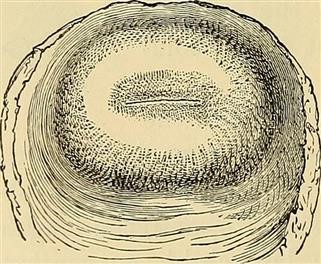The Infertility Organization
Infertility Treatments Over 40
We are the top source for complete info and resources for Infertility Treatments Over 40 on the Internet.
10 Data Sources: A PubMed search was completed using the key terms infertility, subfertility, treatment, etiology, and diagnosis. Erfahren Sie mehr darüber, wie Oath Daten erfasst und verwendet und wie unsere Partner Daten erfassen und verwenden. Possible reasons for abnormal semen include: a lack of sperm – you may have a very low sperm count or no sperm at all sperm that aren't moving properly – this will make it harder for sperm to swim to the egg abnormal sperm – sperm can sometimes be an abnormal shape, making it harder for them to move and fertilise an egg Many cases of abnormal semen are unexplained. Medical treatments[edit] Medical treatment of infertility generally involves the use of fertility medication, medical device, surgery, or a combination of the following.
Sperm counts can fluctuate, so that several samples may be necessary. American Urological Association Education and Research, Inc. Infertility is more likely in men who have had this condition.
More Information Around Infertility Treatments Over 40

A lot more Resources For Infertility Treatments Over 40
Congenital blockage of the ductal system An increased rate of duct obstruction is observed in children of mothers who were exposed to DES during pregnancy. We recommend immediate evaluation for a couple attempting pregnancy when the woman has a prior history of pelvic infection. Stem cell therapy[edit] Nowadays, there are several treatments (still in experimentation) related with stem cell therapy. GIFT (gamete intrafallopian tube transfer) and ZIFT (zygote intrafallopian transfer). Like IVF, these procedures involve retrieving an egg, combining it with sperm in a lab, and then transferring it back to your body. Three modalities are used to treat myomas: medical treatment, surgical treatment, and embolization.
Below are Some Even more Details on Infertility Treatments Over 40
Start CC at the initial dose of 50 mg/day for 5 days. This difference is not merely conceptual since the studies carried out in order to understand the causes and the treatment given in both cases are totally different. Female age of 35 years or older: For unclear reasons, egg numbers decrease at a rapid rate as women age. Ejaculatory Duct Obstruction. (PDF, 3 MB) The Journal of Urology, 1980. Financing fertility treatment can also be costly, but there are programs that can help with this.Introduction Over their lifetimes, approximately one in every five couples in the United States seeks infertility care. Surprisingly, only half of couples who are trying to become pregnant achieve pregnancy easily and about one in ten American couples of reproductive age are involuntary infertile; male infertility accounts for half of these cases. Despite the relative importance of infertility due to the male, infertility evaluations have traditionally focused on women, because women tend to seek gynecological care and because men often are reluctant to seek advice. Hypospadias: The urethral opening is under the penis, instead of its tip.
Extra Resources For Infertility Laboratory and Surgery Center
Clomiphene citrate for unexplained subfertility in women. 9 Because anxiety over infertility may cause increased stress and decreased libido, further compounding the problem, formal counseling is encouraged for couples experiencing infertility. Egg donation. This can help you if you have ovaries that don't work right but you have a normal uterus. Pregnancies after Testicular Sperm Extraction and Intracytoplasmic Sperm Injection in Non-obstructive Azoospermia. (PDF, 3 MB) Human Reproduction, 1995. Several studies have reported different causes of infertility [7-9]. 6 The initial history should cover menstrual history, timing and frequency of intercourse, previous use of contraception, previous pregnancies and outcomes, pelvic infections, medication use, occupational exposures, substance abuse, alcohol intake, tobacco use, and previous surgery on reproductive organs. Debate over whether health insurance companies (e.g. in the US) should be required to cover infertility treatment. Usually no more than 1 – 2 embryos are transferred, and therefore additional embryos can be frozen, or cryopreserved, for future use; 3) embryo donation – a process where a fully developed embryo from another person in combination w/donor sperm, or couple who underwent IVF, are donated to another woman, the future intended mother, for transfer into her uterus; and 4) gestational surrogacy – a process where another woman will undergo an embryo transfer and carry the pregnancy for another person. If the woman is age 35 years or older, she should see a healthcare provider after six months of trying to get pregnant. Erectile Disfunction (ED): Also known as impotence, this condition is common and affects 20 million American men. ED is the result of a single, or more commonly a combination of multiple factors. In the past, ED was thought to be the result of psychological problems, but new research indicates that 90 percent of cases are organic in nature. However, most men who suffer from ED have a secondary psychological problem that can worsen the situation like performance anxiety, guilt, and low self-esteem. Many of the common causes of impotence include: diabetes, high blood pressure, heart and vascular disease, stress, hormone problems, pelvic surgery, trauma, venous leak, and the side effects of frequently prescribed medications (i.e. The authors of the new global standards said the revised definition gave every individual “the right to reproduce.” Until now, the WHO’s definition of infertility—which it classed as a disability—has been the failure to achieve pregnancy after 12 months or more of regular unprotected sex. Anabolic steroids: Popular with bodybuilders and athletes, long-term use can seriously reduce sperm count and mobility. Severe ovarian hyperstimulation syndrome is characterized by easily palpable ovaries, severe ascites, nausea, vomiting, diarrhea, shortness of breath, hydrothorax, peripheral edema, oliguria, hemoconcentration (eg, hematocrit level >48% and hemoglobin level >16 g), and creatinine level greater than 1.
Previous Next
See also
Questions on Infertility Treatment
The Infertility Center of St. Louis Reviews
Infertility Clinic Bhopal